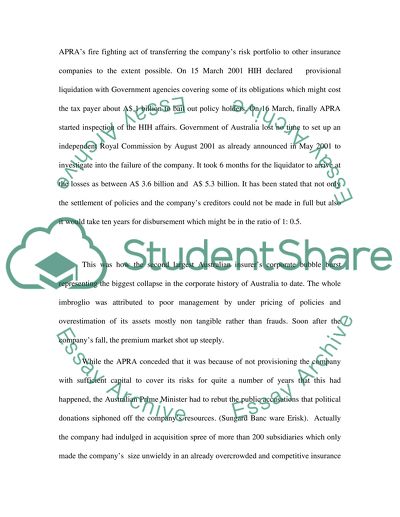Cite this document
(“Auditing HIH disaster Essay Example | Topics and Well Written Essays - 2500 words”, n.d.)
Auditing HIH disaster Essay Example | Topics and Well Written Essays - 2500 words. Retrieved from https://studentshare.org/miscellaneous/1510902-auditing-hih-disaster
Auditing HIH disaster Essay Example | Topics and Well Written Essays - 2500 words. Retrieved from https://studentshare.org/miscellaneous/1510902-auditing-hih-disaster
(Auditing HIH Disaster Essay Example | Topics and Well Written Essays - 2500 Words)
Auditing HIH Disaster Essay Example | Topics and Well Written Essays - 2500 Words. https://studentshare.org/miscellaneous/1510902-auditing-hih-disaster.
Auditing HIH Disaster Essay Example | Topics and Well Written Essays - 2500 Words. https://studentshare.org/miscellaneous/1510902-auditing-hih-disaster.
“Auditing HIH Disaster Essay Example | Topics and Well Written Essays - 2500 Words”, n.d. https://studentshare.org/miscellaneous/1510902-auditing-hih-disaster.


